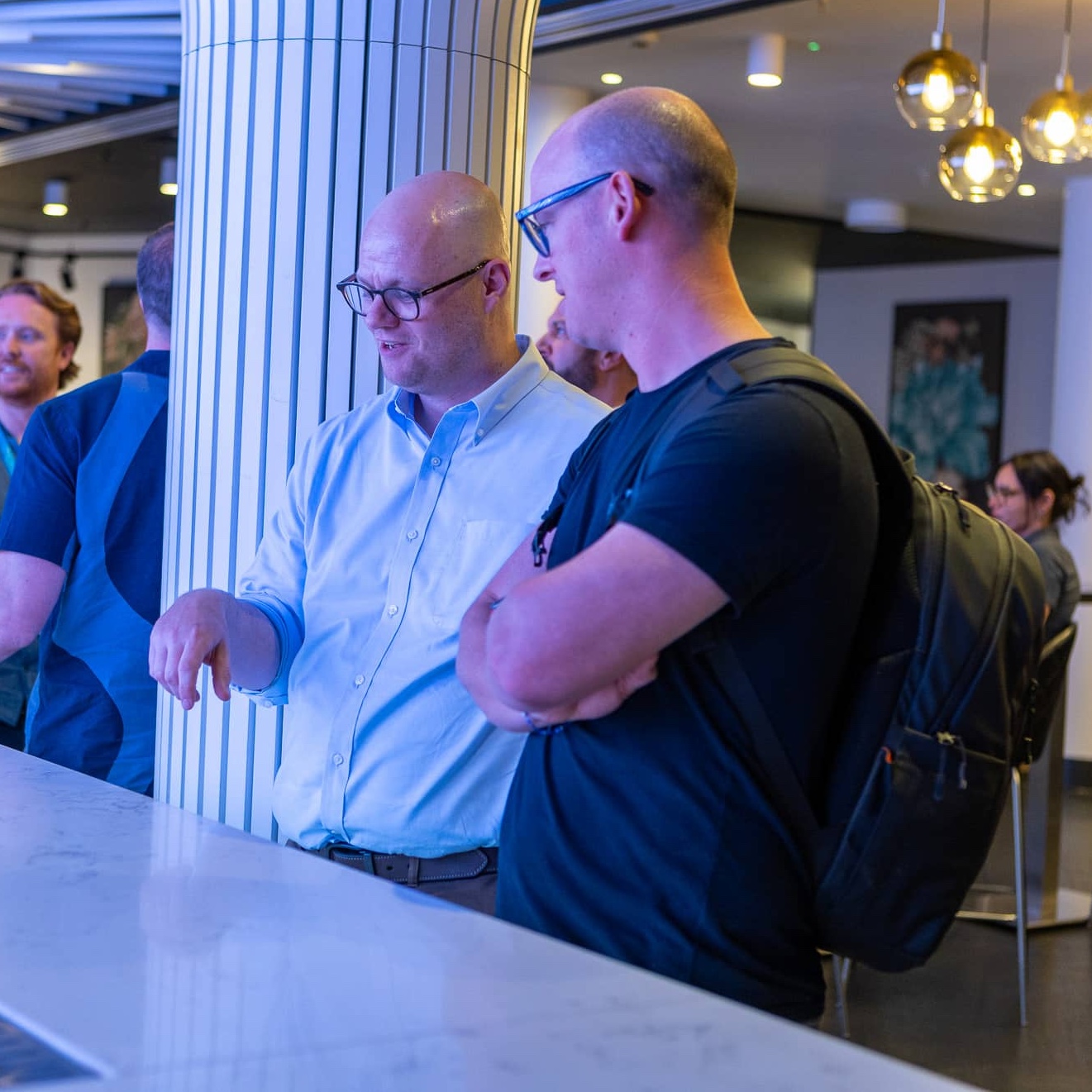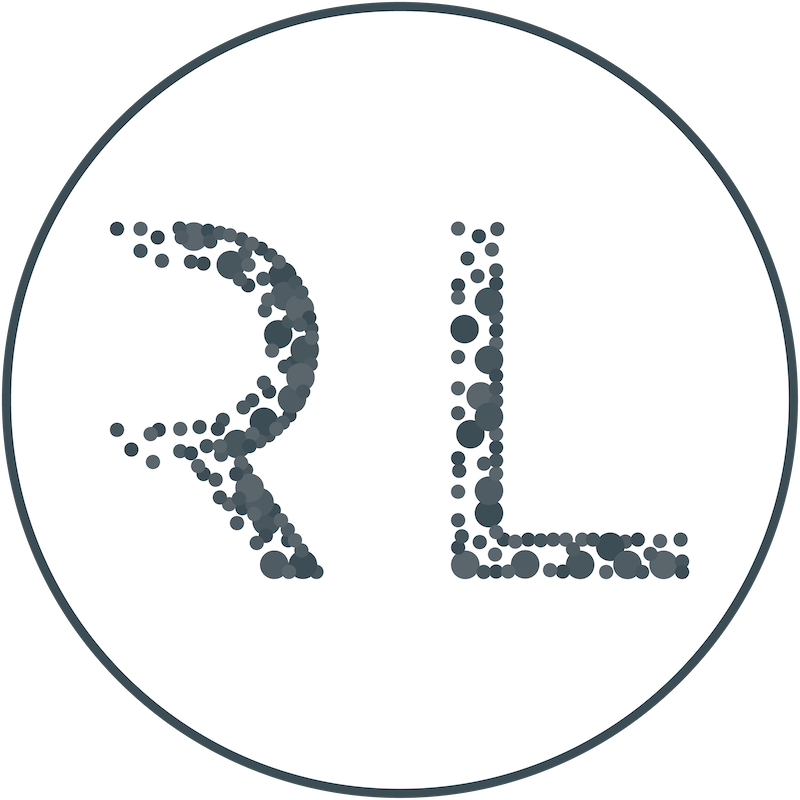RL Enterprise Day Where AI Meets Human-Centric Hiring
On a sun-soaked June day in London, The Westminster played host to a landmark moment: the first-ever RL Enterprise Day, and our first event back in the capital since before COVID. In the heat of the city, TA leaders from some of the world’s biggest enterprise organisations came together for one focused, fast-paced day designed to tackle a big question: how do we scale hiring without losing the human touch?
Through a series of sharp, powerful sessions, the theme kept rising to the surface – AI is here to stay, but the future of TA depends on how we use it to serve people, not just process. That requires clear vision, deep connection, and a bold new kind of leadership.
Learn more below
Operating Across Borders: A Panel on Global TA Leadership
To open the day, Jennifer Candee, Saqib Khan, Mark Brooker and Adrian Thomas shared what really changes when TA leaders move from regional to global responsibilities. It was a candid, wide-ranging conversation covering everything from decentralised DEI reporting to the uncomfortable truth that most teams still avoid measuring the metrics that really matter. Diversity, they agreed, needs to reflect the realities of local markets – and global leadership means learning how to hold space for both consistency and nuance.
“Global TA leadership isn’t for the faint-hearted – you have to love it!”
What really resonated was their take on people leadership. Global scale doesn’t mean detachment – it means more deliberate connection. Through frequent off-sites, strong 1:1 rhythms and sharp communication, teams can stay close to a vision they actually believe in. Work-life balance, they admitted, won’t be perfect – but with discipline and structure, it’s possible to build something sustainable on a global scale.




Navigating Change: Disconnection and Purpose
From Indeed, Matt Burney stepped up to share never-before-seen data from a new study conducted with YouGov. His findings revealed a growing divide between how leaders feel and how employees experience the workplace. While over 90% of senior managers feel prepared for their role, only 40% of employees feel supported in theirs. This disconnect, Matt warned, is fuelling a quiet disengagement he called “rust out” – the slow loss of creativity, loyalty and energy.
“AI isn’t a magic wand. It’s a mirror.”
Matt offered a sharp critique of surface-level AI implementation. Most senior leaders are using AI weekly, but their teams aren’t experiencing it. AI, he argued, should be used not to replace human effort but to rebuild clarity, free up time and reinforce purpose. Without that foundation, transformation won’t stick. He reminded us that people don’t resist change – they resist change without purpose.



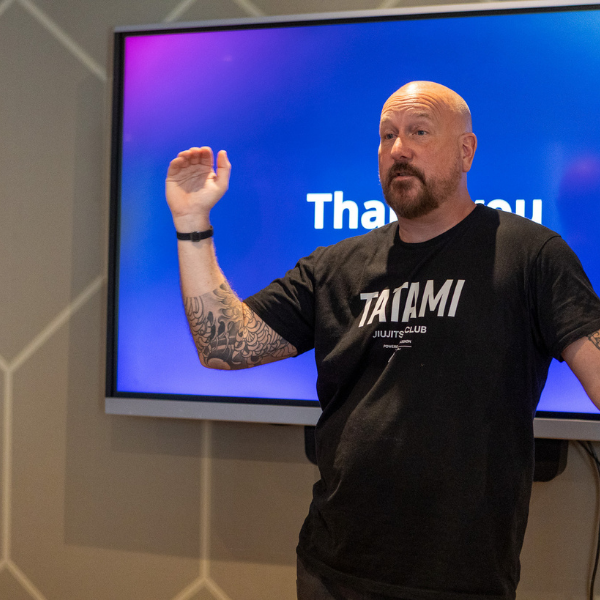
Deel and Metaview Are Redefining Hiring Intelligence
In one of the most practical sessions of the day, Alan Price (Deel) and Siadhal Magos (Metaview) shared how they’ve built a high-performance, AI-enabled hiring engine. With 2,700 hires in 2024 and nearly two million applications forecast, Deel’s scale demands more than speed – it demands consistency, confidence and insight
“Increasingly the skills that are required are the ones used to figure out how to prompt the LLM – it’s context engineering rather than prompt engineering.”
Using Metaview, their interviews are now captured, structured and analysed with depth. The tool never makes decisions – it just gives recruiters the ability to interrogate curveball feedback, evaluate hiring decisions six months later, and coach interviewers with real data. Most impressively, Metaview tailors its outputs to Deel’s internal frameworks. It saves Deel time, but only because Deel put the initial work into contextualising the structure they require. The result? Faster decisions, better quality and a more confident hiring culture.


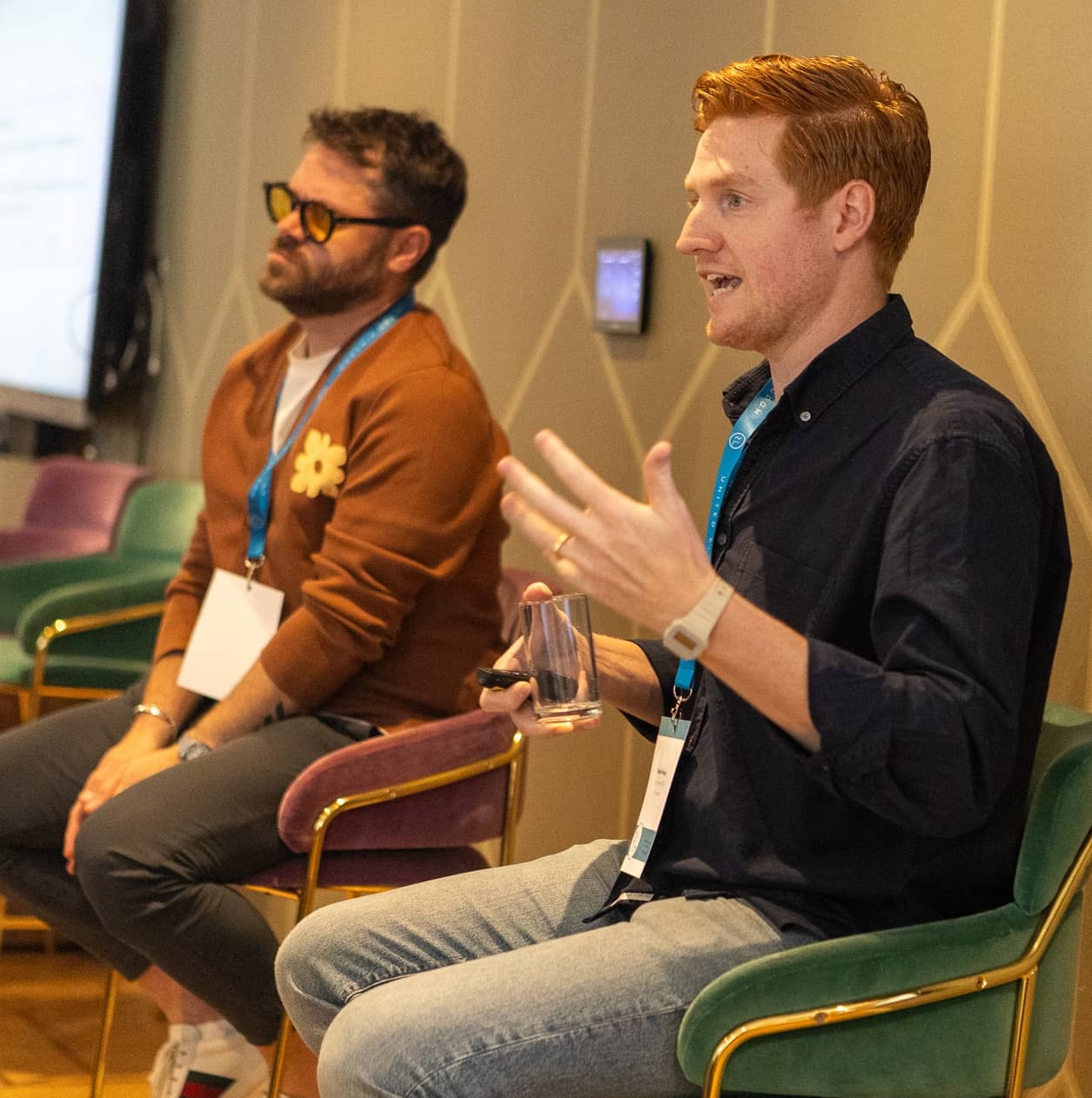

Cath Possamai on Raising the Bar – And the Value of the Room
Cath Possamai delivered a behind-the-curtain look at Amazon’s world-renowned Bar Raiser programme – the gold standard for hiring consistency at scale. But as one of the most confidential talks of the day, this was one you had to experience in the room. No slides. No notes. Just a masterclass in quality, discipline and the art of holding the bar high.
Following Cath’s session, delegates broke for a much-needed lunch in The Westminster’s cool, elegant dining space. There were plenty of thoughtful conversations – and more than a few compliments on the mac and cheese.
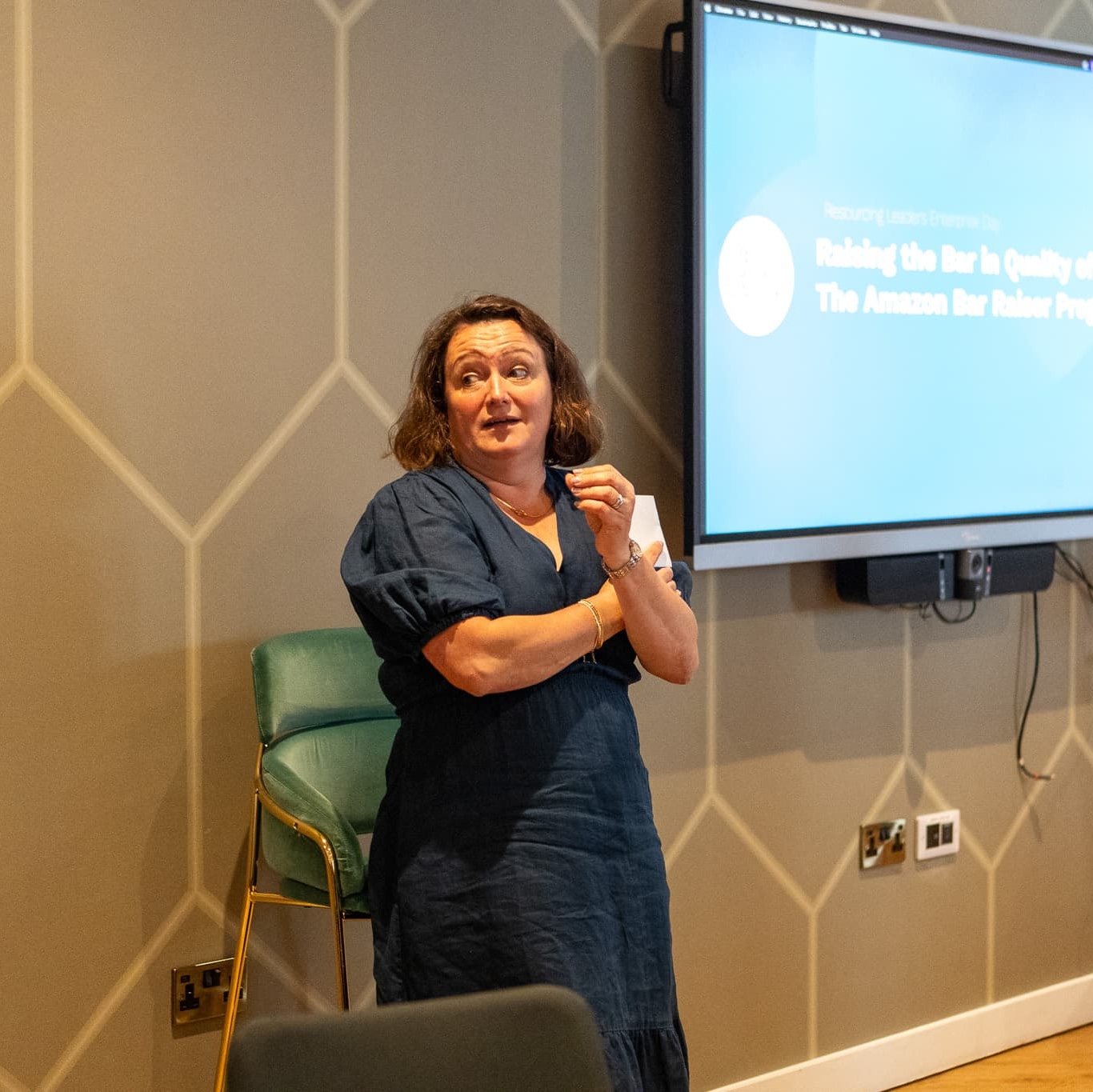



The Case for Candidate Experience: Alexander Hanson-Smith, inploi
After lunch, Inploi’s Alexander Hanson-Smith reminded the room that candidate experience is not just a concept – it’s a feeling. He challenged us to ditch the jargon and remember that candidates are people, and people are emotional beings. With humour and insight, he pulled from behavioural science – from the peak-end rule to the psychology of mirrors in lifts – to show how small choices in tone, timing and design shape the entire candidate journey..
“Normal people don’t say ‘candidates’. They say ‘people’.”
But this wasn’t just theory. Alexander made the case for AI as an enabler of better, more consistent experience at scale. Used correctly, technology doesn’t make things colder – it frees up recruiters to be more present, more personal and more impactful. Using AI isn’t about replacing recruiters – it’s about helping them show they care, even when hiring at volume.
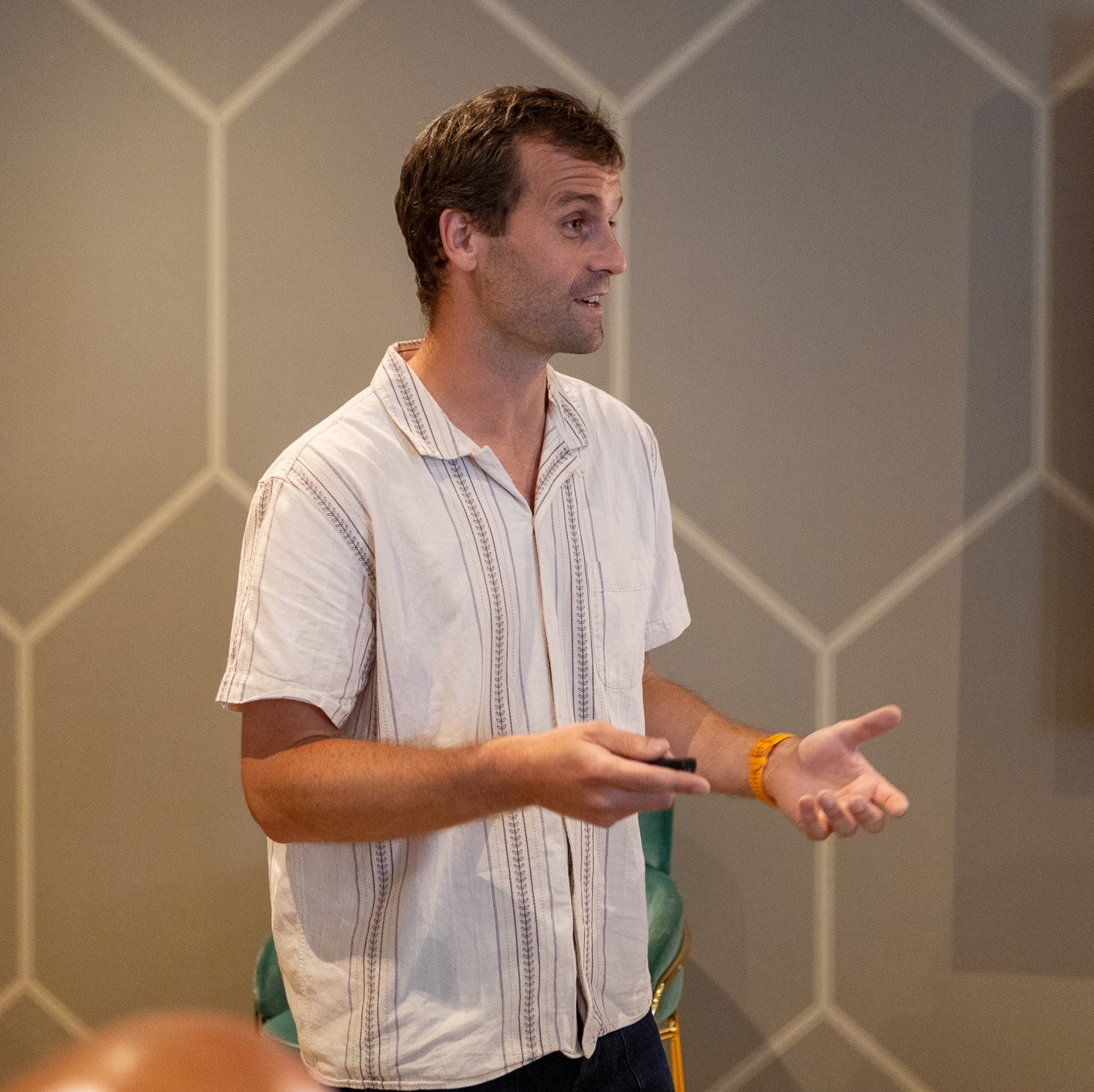

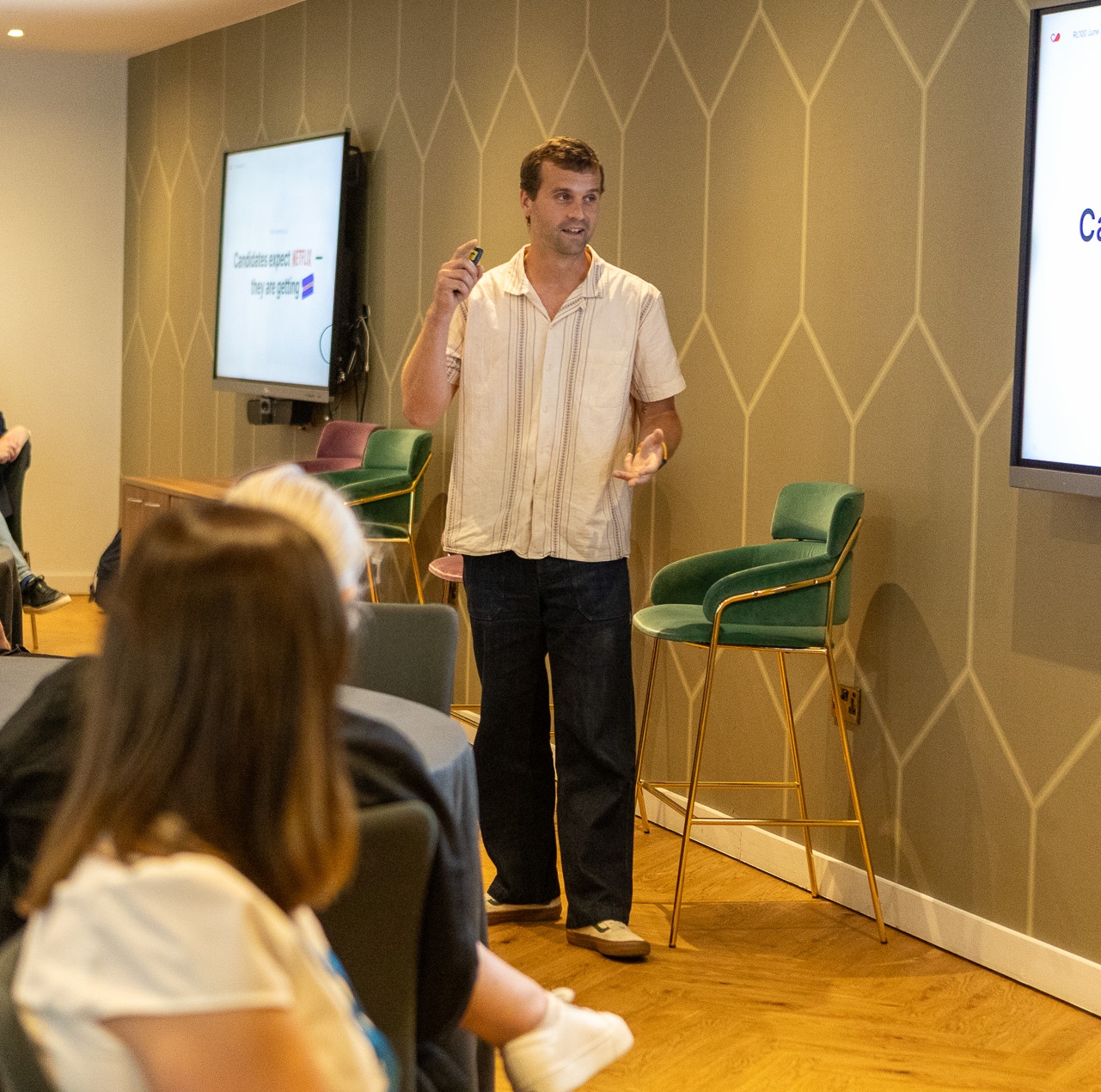

Matt Alder: The Vision Behind the Function
Closing the formal part of the agenda was Matt Alder, who brought measured foresight and a call for sharper vision. Drawing from over 700 interviews with TA leaders through his Recruiting Future podcast, Matt made the case that vision isn’t just a buzzword – it’s a leadership responsibility, especially in moments of deep transformation. He pointed to Apple’s original iPod pitch – “a thousand songs in your pocket” – as the gold standard in selling not a product, but a compelling vision.
“AI doesn’t have to develop much further to radically change what we do.”
Matt warned that too many in TA are still thinking in tasks, which risks not just jobs, but the relevance of entire functions. Instead, he called for leaders to shift their mental models, embrace the discomfort of change and take AI seriously – not as a threat, but as a catalyst. The opportunity, he suggested, lies in using AI to elevate the human aspects of hiring: judgement, influence and strategic thinking. As TA starts to integrate more deeply with other areas of HR, success will depend on how well we lead through complexity. Looking ahead, Matt predicted a new era of “quantum jobs” – but you’ll have to listen to his pod to find out more on that!




Networking, Quizzing and Through the CHRO’s Eyes
Next up was the networking hour, where delegates had the chance to meet with our brilliant partner vendors: Join Talent, Maki, Hire Intelligence, Hire Right, Hackajob, Metaview, inploi and Indeed, to discuss the latest challenges they are facing and the solutions that might be provided. While this took place, others joined in on an extended Q&A with our speakers – a chance to pick up on unfinished conversations and go even deeper.
It was after this that the day closed with something truly special – a fireside chat between Kirstie Kelly and Gail Stanley, former CHRO at KPMG. After 20 years in the Middle East, Gail admitted that sipping a glass of wine while reflecting on TA strategy felt a little out of the ordinary – and her unique insights and perspective were just as novel. Gail urged TA leaders to become T-shaped professionals, to integrate across HR verticals and to reframe TA as a strategic benefit, not just a cost centre. Utilising her formidable experience, she offered some standout advice – get out into the market, understand what talent wants locally and learn to speak in a language that resonates.




A Toast to What’s Next
As the day drew to a close, the room made its way to The Westminster bar for a well-earned drink. After hours of high-level discussion, rich insights and authentic connection, the mood was equal parts celebratory and reflective. There was talk of follow-ups, collaborations and just a little pride that enterprise TA had been given a space to think big again.
The RL Enterprise Day was bold, honest and human. It reminded us that AI can help us move faster and smarter – but only if we use it to reinforce what really matters: clarity, care and connection.

